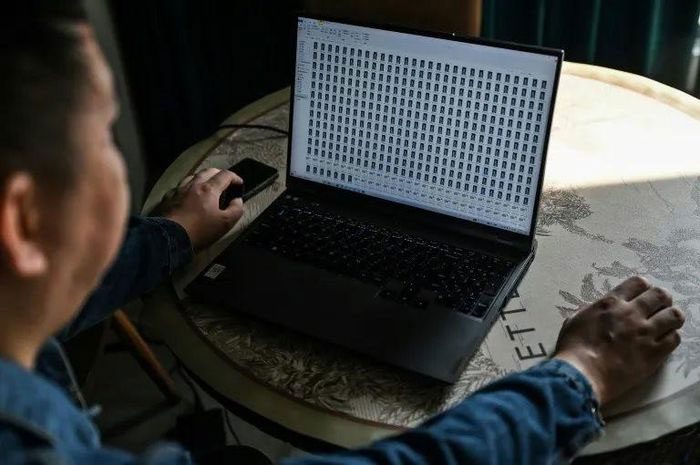In a quiet cemetery in Eastern China, Mr. Seakoo Wu pulled out his phone, placed it on a gravestone, and played a recording of their only child who passed away from a stroke last year at the age of 22 while studying at the University of Exeter in the UK.
These are the words that the deceased student can no longer speak, but they are fully created by artificial intelligence. According to AFP, influenced by the pain of losing their child, Mr. Wu and his wife, along with an increasing number of Chinese people, are placing their trust in artificial intelligence (AI) technology to create lifelike representations of their departed loved ones.
“Once we synchronize reality and the virtual universe (metaverse), I will have my son by my side again. I can train (the AI model) him… so that when he sees me, he knows I am his father,” Mr. Wu said.
Following the explosion of deep learning technologies like ChatGPT in China, Mr. Wu began exploring ways to “resurrect” his son. He collected images, videos, and audio recordings of his son, spending thousands of USD to hire companies to replicate his son’s face and voice using AI.
The results so far remain rudimentary, but Mr. Wu has also established a working group to create a database containing a vast amount of information about his son. He hopes to input this into powerful algorithms to create a representation capable of accurately mimicking his son’s thoughts and speech patterns.
Although several companies producing similar products have emerged in the United States in recent years, the industry is booming in China, according to Zhang Zewei, founder of Super Brain AI Company and a former collaborator of Mr. Wu. “Many people in China have emotional needs, giving us an advantage in terms of market demand. A digital version of someone (could) exist forever, even after their physical body is lost,” Mr. Zhang said.
Chinese companies claim they can create thousands of “digital human” models from just 30 seconds of audiovisual material of the deceased. Many believe that these replicated models can provide much-needed comfort to those grieving the loss of loved ones.
Currently, Super Brain charges between 10,000 and 20,000 Chinese Yuan (approximately 1,400 to 2,800 USD) to create a basic representation within about 20 days, Mr. Zhang noted. They cater to requests ranging from deceased individuals to living parents who cannot spend time with their children, and—controversially—ex-boyfriends of heartbroken women.
Clients can even hold video calls with a digital employee whose face and voice are digitally overlaid with that of their lost loved one.

Super Brain charges between 1,400 to 2,800 USD to create a basic representation for the deceased.
Meanwhile, Mr. Sima Huapeng, founder of Silicon Intelligence based in Nanjing, stated that this technology will “bring a new kind of humanism.” He compares it to portraiture and photography, enabling people to memorialize the deceased in unprecedented ways.
However, while many acknowledge that simulating the deceased can offer comfort to the living, understanding the psychological and ethical implications still requires further research.
“An important question here is how faithfully these models will represent the personalities they are designed to mimic. What happens if they do things that could ‘pollute’ the memories of the person they are meant to represent?” questioned Tal Morse, a researcher at the University of Bath in the UK.
Another challenging situation arises from the fact that the deceased cannot provide consent, experts say.
“Every new technology is a double-edged sword,” Mr. Zhang Zewei commented. Super Brain currently maintains a policy of not working with individuals they believe may suffer negative impacts from virtual models.





















































